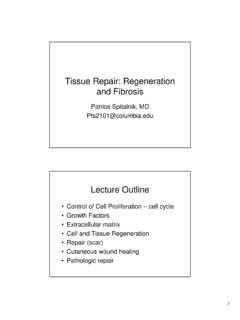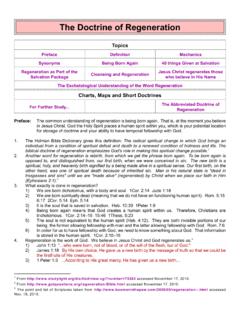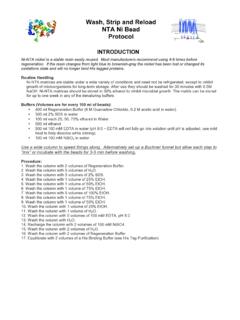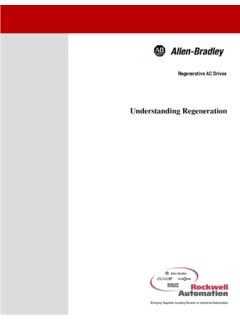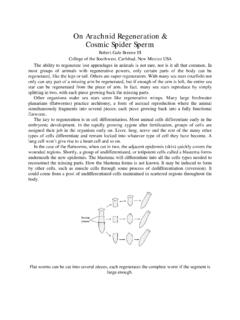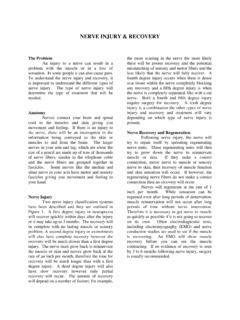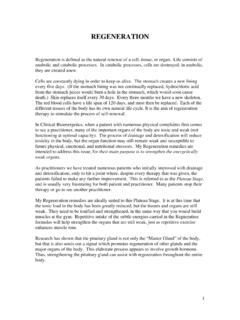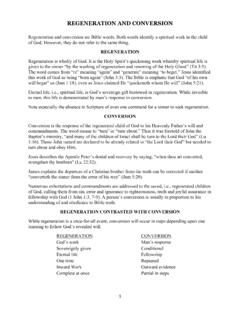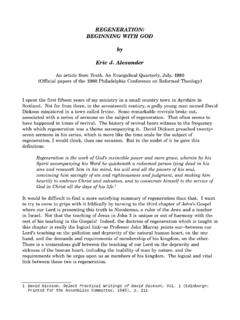Transcription of UNDERSTANDING DIESEL PARTICULATE FILTERS (PDF)
1 UNDERSTANDING DIESEL PARTICULATE FILTERS (PDF) The following information has been provided by Volvo Trucks North America. While some of this information is specific to Volvo products, the DPF concepts and process are applicable to most makes. Copyright 2013 Volvo Trucks North America OVERVIEW The two compounds in DIESEL exhaust that have the most impact on the environment are NOx and PARTICULATE matter, which is more commonly called Soot. NOx, or Nitrogen oxides, is the generic term for a group of highly reactive gases, all of which contain nitrogen and oxygen in varying amounts. Many of the nitrogen oxides are colorless and odorless. However, one common pollutant, nitrogen dioxide along with particles in the air can often be seen as a reddish-brown layer over many urban areas. Soot, is the visible exhaust the black smoke you see coming from the stacks. It s made up of unburned fuel, carbon, and other solid material. Beginning January 2007, the Environmental Protection Agency put into place new emission requirements for all DIESEL engines.
2 These strict regulations greatly reduce DIESEL emissions. Actually, from 1990 to 2007, the EPA has progressively reduced allowable NOx levels in DIESEL exhaust a total of 80%. Today, with the 2007 regulations, the EPA has reduced allowable PARTICULATE matter in DIESEL exhaust a total of 90%. And the difference is not just what you see on the highways, but it s also in much cleaner air and a healthier environment. To meet the EPA 2007 levels for PARTICULATE matter, all manufacturers turned to an Exhaust After-Treatment System. Beginning 2007, Exhaust Aftertreatment System (ATS) are on every DIESEL truck sold in US and Canada DIESEL PARTICULATE FILTERS (PDF) Question: What do I need to know? Answer: For the most part, they will take care of themselves. You do have some control. ABOUT DPFs The technology in this After-Treatment System is the DIESEL PARTICULATE filter . You ll also hear it referred to simply as the DPF. The DPF replaces the old muffler and traps.
3 Instead of exhausting soot into the atmosphere, the DPF traps the soot, and then uses heat to oxidize it. So what exits the exhaust is much cleaner air. The soot is periodically regenerated into clean, carbon dioxide gas and water vapor. The resulting xhaust is clean no odor or DIESEL smell. This cleaner exhaust won t blacken your trailer, and won t even blacken inside of exhaust stack! Here s How It Works. The DPF is actually a ceramic filter that has thousands of tiny channels. DPF collects soot ( PARTICULATE matter) created by engine As the exhaust passes through these channels, soot is trapped along the channel walls and is prevented from exhausting through the stacks, which also protects the environment. Solid matter is Periodically, the DPF must remove the soot that has built up along the channel walls. This is called regeneration . It s like a like a self-cleaning oven regeneration is an oxidation process that uses heat to remove the soot from the filter .
4 The regeneration process is actually pretty simple. There are really only two stages: Passive and Active. There Are Really Only Two Stages Of After-Treatment: 1. Passive 2. Active PASSIVE regeneration Passive regeneration occurs naturally under steady driving, when the engine achieves the required operating temperature. The DPF contains an oxidation catalyst that is coated with precious metals. Under normal highway driving, passive regeneration takes place as the catalyst in the DPF heats up enough to oxidize the soot and turn it into C-O-two. The C-O-two exits through the exhaust stack. Any residues left behind are converted into harmless ash that collects in the DPF canister. The process is continual, so whenever the vehicle reaches operating temperature, the DPF will begin passive regeneration . This means you don t have to do anything to make passive regeneration happen, and you won t notice any differences in how the vehicle operates. In fact, passive regeneration is happening all the time, and you ll never know it!
5 ACTIVE regeneration Over time, passive regeneration is not enough to prevent soot from building up in the DPF. And that s when the second stage of cleaning is used. This is called active regeneration . When your engine's computer indicates that the DPF needs cleaning, and if the operating temperature is high enough, it automatically initiates an active regeneration . The system will typically initiate an active regeneration by itself. Youmay be unaware that there is an active regen in progress. Active regeneration begins when a small amount of fuel is introduced into the exhaust stream between the turbocharger and the DPF. This fuel is atomized into an extremely fine spray that does not burn. Instead, when it makes contact with the catalyst on the DPF, it generates intense heat upwards of 1100 degrees Fahrenheit -- that oxidizes any remaining soot on the ceramic exits the stacks and ash collects in the canister. ACTIVE regeneration HOW OFTEN?
6 Depending on your driving, active regeneration may happen as often as once a day. If you do a lot of stop and go, it can happen even more often. Frequency depends on duty cycle and how much soot collects as often as once a day or every other day An active regeneration could take up to one-half hour or more. If you slow down or stop the vehicle after an active regeneration has started, it may be interrupted and might have to start again. So don t be concerned if the dash indicates that another regeneration is in progress. Periodically, the DPF will need to be serviced with a professional cleaning to remove the ash that has collected in the canister. This can take as little as 30 minutes. MORE STOPS = MORE FREQUENT ACTIVE REGEN S. ACTIVE regeneration WHAT S ACTUALLY HAPPENING? During active regeneration , fuel is introduced which can raise temperatures in the exhaust stream to help regeneration . This can take 20-60 minutes and may consume gallon of fuel.
7 A slight whistling is normal. THE REGEN TEMPERATURE IS ROUGHLY EQUAL TO EXHAUST SYSTEM TEMPERATURES ON A LONG HARD PULL. ACTIVE regeneration WHEN, WHERE, HOW? The truck can regen all by itself ONLY while moving. If the driver slows or stops the truck, the regen will stop. If a regen is needed while stopped, the driver or a technician must initiate a parked regen. A PARKED TRUCK CAN T REGEN BY ITSELF WITHOUT DRIVER INTERVENTION. ACTIVE regeneration HOW WILL YOU KNOW? You ll see this message in the Driver Information Display: Regen In Progress ACTIVE regeneration WHAT DO YOU NEED TO DO? Usually, nothing. The vehicle needs to run at operating temperature during the regeneration , so highway driving is best. Just drive as you normally would. During active regeneration , the exhaust outlet temperature is extremely high. So watch your location if regeneration is about to begin. If you are entering a location where high exhaust temperatures might be unsafe - a crowded work site, a fueling station or a tunnel, etc.
8 - you should cancel the regen. Here s how: Press enter on the DID control stalk to disable regeneration until you are returning to the highway and can enable regen again. Or wait until you re stopped in a safe location where you can perform a parked or manual regeneration . The High Exhaust System Temperature indicator illuminates during active regeneration when the vehicle is stopped or moving at less than 5 miles per hour. This is to remind you to be aware of your surroundings during an active regeneration when the vehicle is stopped or moving slowly. If an automatic regeneration is stopped, the Request regeneration Icon will stay illuminated and the message Manual REGEN Required will display in the Driver Information Display. ACTIVE regeneration WHAT HAPPENS IF YOU SLOW DOWN? A tell-tale yellow lamp may come on if the vehicle slows down below 5 mph after operating on the highway and accumulating heat in the DPF. This means HIGH EXHAUST TEMPERATURE.
9 It does NOT indicate that there is anything wrong. The lamp will turn off after the temperature is back to normal level or if vehicle speed > 10 mph. When parking the vehicle and the lamp is on, you should: KEEP THE VEHICLE AWAY FROM PEOPLE, FLAMMABLE MATERIALS, VAPORS, STRUCTURES. DISABLING regeneration You may want to disable regeneration if the truck will be soon be in a location where high exhaust system temperature is undesirable (parking indoors to unload). If regeneration is already underway and you find yourself in a hazardous location, you can cancel the regen. Here s how: To disable regeneration , navigate using the Driver Information Display menu and the right-hand stalk controls, 1. Use the controls to scroll to Aftertreatment. 2. Press ENTER. 3. Scroll to Cancel REGEN. Press ENTER. 4. Scroll to Disable ENTER. The Disable REGEN box will be checked. Using the Driver Information Display menu and the right-hand stalk controls, scroll down to the after-treatment menu.
10 Select Cancel REGEN and then select Disable REGEN. This will prevent any regeneration from happening until you ENABLE it again. When regeneration is disabled, the letters ATS with an X through them will be displayed in the Information display. This means that you are preventing regeneration from taking place and if this goes on long enough, you will shut down the vehicle. So as soon as possible, enable regeneration by returning to the after-treatment menu, select CANCEL REGEN, and then choose ENABLE regeneration . You ll see the X in the enable regeneration box, and the ATS symbol with the line through it will disappear from your display. DISABLING regeneration IMPORTANT! If the Regen has been disabled, the Driver Information Display shows an X through ATS (AfterTreatment System) on the bottom row. IMPORTANT: RE-ENABLE REGEN AS SOON AS POSSIBLE. IF YOU DON T, YOU MIGHT DISABLE THE TRUCK AND IT WILL NEED TO BE TOWED. ENABLING regeneration 1.
